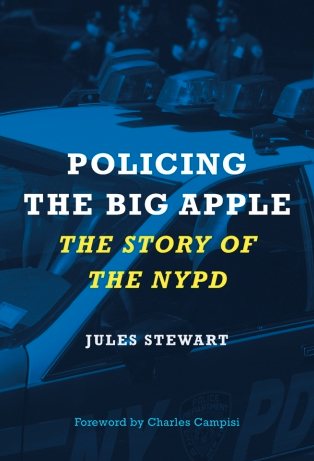Author: Jules Stewart
ISBN No: 9781789144826
Review date: 24/04/2024
No of pages: 256
Publisher: Reaktion
Publisher URL:
http://www.reaktionbooks.co.uk/display.asp?ISB=9781789144826
Year of publication: 20/12/2021
Brief:
It’s arguably the most written-about and interesting city of our time, and it has the policing and the crime to match, as this history of policing New York ably sets out.
It’s the city of the Statue of Liberty and the headquarters of the United Nations; it’s also the scene of the 9-11 suicide terrorism and shuddering on-street crime after the civic authorities went bust in the mid-1970s; which prompted (eventually) the famous zero-tolerance response by police. But as the author points out, the police are ‘damned if they do, damned if they don’t’ in terms of touching (literally and metaphorically) the public that they are paid to serve. If the police don’t act in an approachable manner, they are regarded as stand-offish and resented. If they do approach the public, there lies the potential for misunderstandings. But as Jules Stewart says, without engaging with the public, the police in New York (or indeed any other city) lack the intelligence to inform how they go about doing their job, and where and when.
The fraught relations that police have with some of New York’s various communities is a theme of the book; the author sees the irony when police are defending protesters who are demonstrating in favour of ‘de-funding’ the police and putting the money towards social justice projects. Without the police there, who is to protect those protesters from the extreme right? Another theme is corruption inside the New York Police Department; the author suggests that corruption comes in cycles; it happens, there’s an outcry and the authorities promise to stamp on it, and maybe they do; even if they do, focus is lost and the corruption starts over.
Policing the Big Apple could easily have fallen between two stools – namely stuffy academic history and slapdash popular history; it hasn’t. It doesn’t have to; the city and its police have too many stories to tell – the Mafia, Prohibition, larger than life mayors.
The book ends with a cop’s own story of attending a bar where a man had tried to hurt a doorman (called in the book a bouncer) with a broken bottle. The attacker winds up in court where the police officer is due to give evidence; and gets jail. In a typically blunt fashion, the cop offers some advice: use your fists, because then at worst it’s a violation or a misdemeanour; and if you break a bottle to use as a weapon (which seem not to break as handily as they do in westerns and other movies), they aren’t that good as weapons (they can hurt the holder too) and bottles leave evidence.
A book, then, for all interested in the police and in New York, even if you have not yet put those two interests together.










